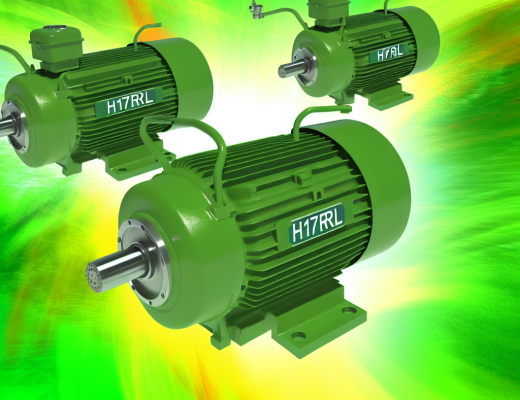Space technology plays a pivotal role in developing clean energy solutions, and solar power plants in orbit are at the forefront of this innovation. You may wonder how these advanced systems harness solar energy far beyond Earth’s atmosphere. In this blog post, we will explore the design, operation, and advantages of space-based solar power, empowering you to understand the potential impact of this groundbreaking technology on our planet’s energy future.
The Concept of Space-Based Solar Power
The concept of space-based solar power (SBSP) revolves around collecting solar energy using satellites located in orbit around the Earth. These satellites capture sunlight without atmospheric interference, enabling them to operate with greater efficiency compared to ground-based solar panels. The harvested energy is then transmitted back to Earth via microwave beams or laser systems, providing a continuous and renewable source of power that can be harnessed at any time of day or night.
Overview of Space-Based Solar Power
Beside offering a solution to the intermittent nature of terrestrial solar energy, space-based solar power presents an innovative way to harvest energy on a grand scale. By placing solar panels in space, you eliminate the obstacles that ground systems face, such as weather, seasonal changes, and geographical limitations, significantly enhancing the reliability of energy generation.
Advantages Over Terrestrial Solar Power
By positioning solar panels in orbit, space-based solar power systems can capture sunlight for longer periods each day, resulting in higher energy yields. They are also unaffected by atmospheric disturbances, making them more reliable than terrestrial solar installations.
Hence, the advantages of space-based solar power systems extend beyond just efficiency. With the ability to collect energy continuously and transmit it directly to areas of high demand, you can ensure that the energy supply remains stable and consistent. Additionally, these systems can potentially serve remote regions with limited access to traditional energy sources, helping to reduce energy inequality. Space-based solar power might also contribute to global sustainability goals by reducing reliance on fossil fuels and lowering greenhouse gas emissions, aligning with the urgent need for renewable energy solutions in your quest for a cleaner future.
Components of a Space Solar Power Plant
Some vital components make up a space solar power plant that operate efficiently in the vacuum of space. These include solar collectors, energy conversion systems, power storage, and transmission systems. Each component plays a vital role in harnessing solar energy and converting it into usable power that can be transmitted back to Earth or used for space missions.
Solar Collectors
Beside capturing sunlight, solar collectors are designed to maximize energy absorption and efficiency in the harsh environment of space. Equipped with reflective surfaces and advanced photovoltaic materials, these collectors convert sunlight into electrical energy. Their optimal positioning and orientation ensure that they can gather the maximum amount of solar energy throughout the day, regardless of other surrounding variables.
Energy Conversion Systems
Collectors play a pivotal role in converting solar energy into usable electricity, but without energy conversion systems, that energy would remain in an unusable state. These systems utilize cutting-edge technology to transform the direct current generated by the collectors into alternating current, suitable for transmission. They also ensure that the generated power remains stable and regulated, making it efficient for distribution to various applications.
Consequently, energy conversion systems are integral to maintaining the efficiency and reliability of a solar power plant in space. They employ inverters and transformers to process the electricity, allowing for consistent energy output. Properly functioning energy conversion systems can adapt to varying solar intensities, ensuring that you receive maximum power availability, even with fluctuating sunlight exposure as the spacecraft orbits Earth or other celestial bodies.
Power Transmission to Earth
Even as the solar power plant captures energy in space, the next step is efficiently transmitting that energy back to Earth. Utilizing advanced technology, the energy harvested can be transformed into microwaves or lasers before being beamed to receiving stations on the ground. This innovative approach enables you to access clean energy from the cosmos, potentially playing a significant role in meeting your energy needs sustainably.
Methods of Transmitting Energy
Above the atmosphere, various methods are employed to transmit energy, primarily through microwave beams or laser technology. By converting the collected solar power into one of these formats, you ensure that the energy travels across vast distances with minimal loss. Both options have their advantages; microwaves can penetrate clouds and atmospheric interference, while lasers offer targeted capabilities for energy focusing.
Ground Receiving Stations
Stations located on Earth are designed to receive the energy transmitted from the space-based solar power plant. These facilities convert the microwaves or laser beams back into usable electricity for your grid.
Even these ground receiving stations are equipped with highly sensitive equipment to accurately capture and convert the incoming energy. They typically consist of large antennas or photovoltaic arrays that optimize reception. Once received, the energy is processed and integrated into your local power supply, ensuring a seamless transition from space-based solar energy to your electricity outlets. These stations play a vital role in ensuring that you can harness the power of the sun, even from outer space, powering homes, businesses, and infrastructure with clean, renewable energy.
Challenges in Implementation
After considering the innovative potential of a solar power plant in space, you must also acknowledge the challenges it faces in implementation. Factors such as complex technology, high costs, and regulatory hurdles can significantly impede progress. Addressing these challenges requires a multidisciplinary approach, collaboration among stakeholders, and a commitment to research and development. Understanding these issues is important for visualizing the feasibility of space-based solar energy.
Technical Obstacles
The journey to establish a solar power plant in space entails various technical obstacles. You need to grapple with developing efficient solar collection systems that can withstand harsh space conditions, alongside ensuring the reliable transmission of energy back to Earth. Additionally, issues related to construction and maintenance in a zero-gravity environment must be meticulously planned and executed.
Economic Considerations
Implementation of a solar power plant in space involves significant economic considerations. You should be aware that the initial investment is substantial, with high costs for technology, transportation, and construction. Funding strategies, including partnerships with private companies and government agencies, will be important to mitigate financial risks.
Consequently, the long-term viability of space-based solar power relies on careful economic planning and consideration of potential returns on investment. You might explore financial models that allow for gradual scaling of operations, evaluate the cost savings associated with reduced fossil fuel dependency, and analyze the pricing of energy transmitted from space. Exploring these avenues will provide a clearer picture of how space solar power can fit into your energy portfolio and contribute to a sustainable future.
Future Prospects
Unlike traditional solar power plants on Earth, space-based solar power systems offer unparalleled energy efficiency and reliability. As technology progresses, you can expect these plants to harness solar energy with minimal interference from atmospheric conditions, positioning them as a game-changer in sustainable energy production. The potential for reduced carbon footprints and increased energy access fuels interest in your future energy landscape.
Potential Advances in Technology
With ongoing research and innovation, the efficiency of solar cells used in space can dramatically improve. Advances such as lightweight materials and advanced infrared lasers to transmit energy back to Earth will significantly enhance the feasibility and efficiency of space-based solar power. This technological evolution promises to redefine your understanding of renewable energy.
Global Collaborations and Initiatives
With nations and organizations increasingly recognizing the potential of space-based solar power, collaborative efforts are blossoming. These initiatives aim to pool resources, share knowledge, and develop viable technologies that will help you transition towards a greener energy future.
Advances in space-based solar initiatives involve major partnerships among space agencies, universities, and private companies worldwide. As you engage with these collaborative projects, expect shared funding, research missions, and experimental launches to drive innovation. Your participation in these global efforts can help pave the way for operational space solar power plants that address terrestrial energy challenges and promote sustainability on a larger scale.
Conclusion
As a reminder, a solar power plant in space primarily harnesses sunlight through photovoltaic cells to generate electricity, which is then transmitted wirelessly to Earth or utilized in orbital applications. This innovative approach not only maximizes energy capture by eliminating atmospheric interference but also provides a consistent power supply, regardless of time or weather conditions. By understanding how these systems function, you can appreciate the potential they hold for sustainable energy solutions in the future.




